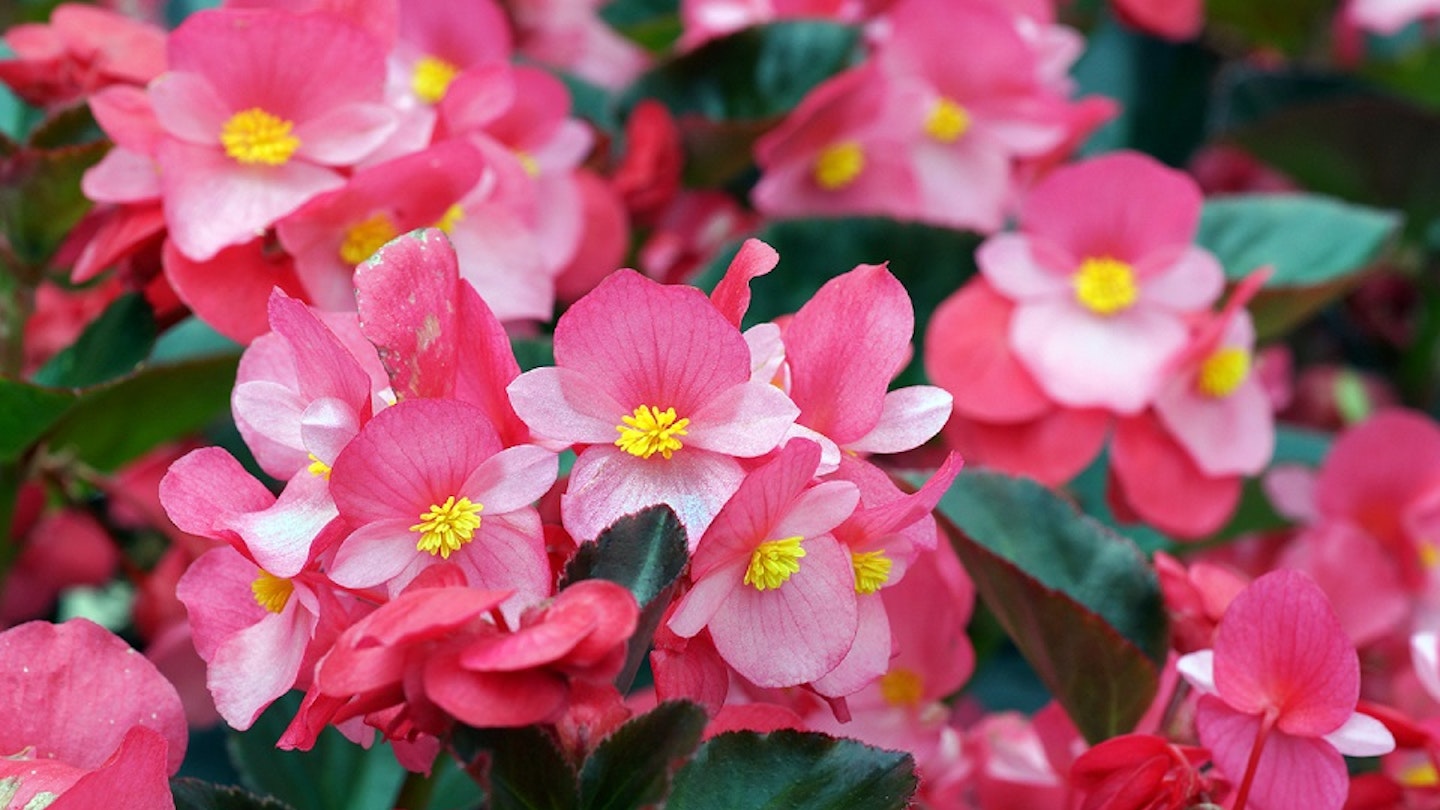Asking someone if they grow begonias is a bit like asking them if they grow plants! The word covers such a range of different forms of flowers and leaves. There are tough begonias for bedding, colourful foliage houseplants, tasteful, small-flowered plants for summer pots and large-flowered trailing plants for hanging baskets. If you’ve always thought of begonias as just small bedding plants and never given them a second look, it’s time to discover some new and incredibly useful plants that can add interest to the garden for months.
One thing that begonias have in common is that they’ll be killed by frost and can be damaged by cold temperatures, so now’s the time when they can finally be planted out in the garden to be enjoyed for the rest of summer and into autumn.
How to grow begonias in the garden
The beauty of begonias is that they grow and flower well in cool, semi-shaded conditions, as well as being able to cope with warm and dry spells in summer (although it’s best to keep them damp if you can). Most outdoor types will start flowering now and keep going until the first frosts; the cool, damp of autumn is no threat to their performance.
In containers outside, grow begonias in a mix of three parts multi-purpose compost to one part John Innes potting compost. This mix should allow for good drainage, which is needed for best results, and the John Innes compost will provide more nutrients and prevent shrinkage of the compost through summer. Soil-based compost alone, though, will be too heavy and can become waterlogged if we have a wet summer.
In the garden, plant begonias into rich soil that has ideally had well-rotted manure or compost added to it in the previous autumn or spring. Once begonias start to flower, feed them weekly with half-strength tomato fertiliser to encourage large, healthy blooms. Water in dry spells. Leaves will start to lose their colour at the edges if they’ve been allowed to dry out, but they’ll bounce back.
Bedding begonias
These are some of the shortest begonias, growing to no more than 25-30cm (10-12in) in height. They’re incredibly drought-tolerant and if you’re looking to create a bedding display in shade that will look as good as your bedding plants in sun, then this is the best option. The key is to be generous and plant them close together, to create a mass of flowers that hides the soil. The plants don’t spread much and they lose their impact if spaced a long way apart. Plant so they’re almost touching and you’ll have a full bedding display that looks good all summer and autumn.
If you’re looking for a large-flowered bedding begonia, try ‘Lotto Mixed’, which produces flowers in red, white and soft pink.
Begonias for pots and hanging baskets
● Begonias can be some of the most colourful trailing plants you can grow and they’re perfect if you want to create a very full ‘ball of colour’ in a basket. One of the best for this is ‘Apricot Shades Improved’, which produces a gradation of colour from orangey-red to sunny yellow, and because it flowers well in part shade you won’t have to rely on functional but uninspiring ivy as a trailing plant in shady baskets.
● Altogether more refined but also superb for a basket is begonia ‘Inferno’. True to its name, it produces flowers in fiery orange and they truly engulf the plant through summer. The blooms are slender, with long, finger-like petals, and the leaves are thin and shield-shaped. For some cooler colour in a hanging basket, try ‘Million Kisses Elegance’, which is very similar to ‘Inferno’ in growth but produces flowers that are a mix of white, cream and rosy pink shades.
● For a big show of colour in pots through leaves and flowers, ‘Glowing Embers’ is a wonderful hard-working, top-performing plant that never seems to have a bad day in summer and autumn. The shield-shaped leaves are an unusual mix of purple and dark green, with a prominent network of veins. The intense colour of the leaves contrasts well with the bright orange blooms. It will grow and flower well in shade and produces slightly darker foliage to create an even starker contrast between leaves and flowers.
Begonias for beautiful indoor foliage
Rex type begonias are enjoying a resurgence in popularity as houseplants, with their intricate patterns and colourings capturing the imagination of a new generation of gardeners. These houseplants are easy to grow. Just grow them out of direct sunlight, which can scorch the leaves. Low light levels produce the best silver colouring on the leaves so try them on a north-facing windowsill.
These begonias can tolerate drying out but they need high humidity around the roots to grow best. If you’ve got a leafy begonia that has gone brown around the edges, it’s a sign the humidity in the room is too low. Place in a tray of damp gravel to raise the humidity and trim off old leaves so new ones take their place. These plants will grow best if grown in peat-based compost and need a minimum temperature of around 15C (59F), although the large-leaved ‘Silver Spirit’ can tolerate lower temperatures, so you could grow it in a cool, shady corner of the patio.
Another that can cope with lower temperatures is ‘Evening Glow’, which produces leaves with frosted grey margins and a blackcurrant centre, with attractive purple staining.
Begonia luxurians is a striking example of the wide variety of begonia species. It’s a cane-type with tall stems that can reach up to 2m (6½ft), with tiny, white, fragrant flowers and palmate foliage with long ‘finger’ leaves. They need warmth to grow tall and prefer high humidity, so nestle among other plants. Feed regularly and keep out of direct sunlight.
